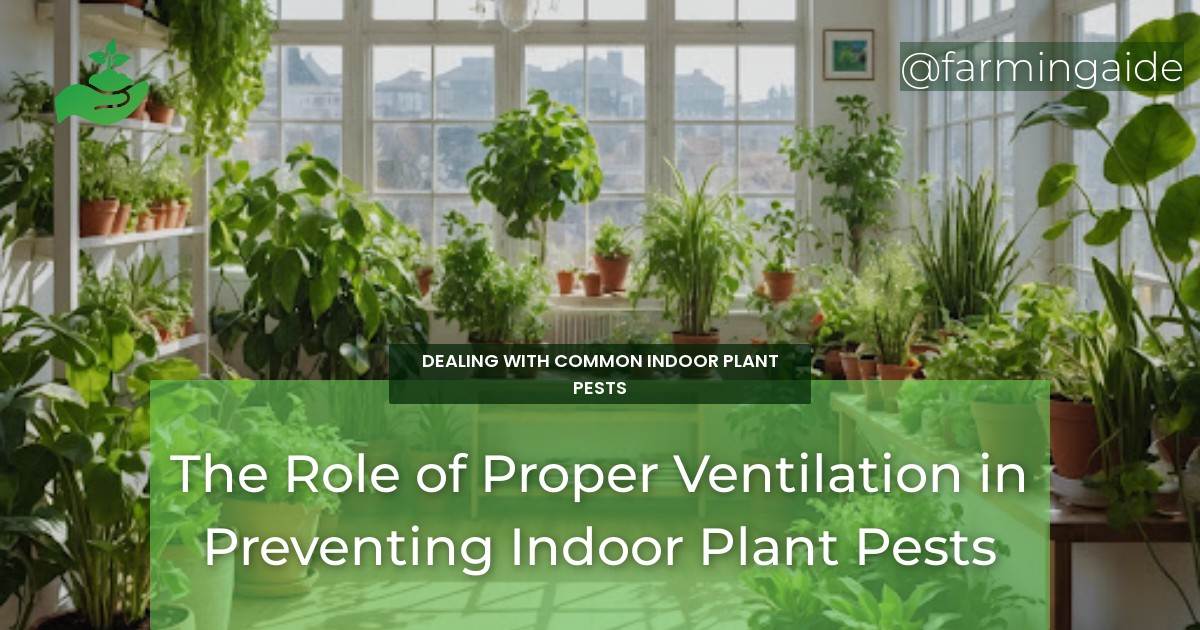As indoor gardeners, we strive to create a nurturing environment for our plants to thrive. However, even with the best intentions, indoor plant pests can quickly turn our green oasis into a breeding ground for unwanted critters. One crucial yet often overlooked aspect of indoor plant care is proper ventilation. In this article, we’ll delve into the role of ventilation in preventing indoor plant pests, exploring the importance of air circulation, natural ventilation techniques, and effective strategies for maintaining a pest-free indoor garden.
Key Takeaways
- Proper ventilation is essential for preventing indoor plant pests.
- Good air circulation helps to reduce humidity and prevent pest infestations.
- Natural ventilation techniques, such as opening windows and using fans, can be effective in preventing pests.
- Regular inspections and maintenance are crucial for detecting pest infestations early on.
- Combining ventilation strategies with companion planting and biological controls can provide a comprehensive approach to pest prevention.
Understanding Indoor Plant Pests
Indoor plant pests can be a nuisance, causing damage to our beloved plants and spreading disease. Common indoor plant pests include spider mites, mealybugs, aphids, whiteflies, and scale. These pests thrive in environments with high humidity, poor air circulation, and inadequate lighting. By understanding the conditions that foster pest infestations, we can take proactive steps to prevent them.
Common Types of Indoor Plant Pests
Some of the most common indoor plant pests include:
| Pest | Description |
|---|---|
| Spider Mites | Microscopic, spider-like insects that feed on plant sap. |
| Mealybugs | Small, white, cotton-like insects that feed on plant sap. |
| Aphids | Small, soft-bodied insects that feed on plant sap. |
| Whiteflies | Small, winged insects that feed on plant sap. |
| Scale | Small, armored insects that feed on plant sap. |
Signs of Pest Infestation
Some common signs of pest infestation include:
- Yellowing or distorted leaves
- Holes or tears in leaves
- Webbing or eggs on plants
- Actual pests visible on plants
The Importance of Ventilation for Indoor Plants
Ventilation plays a critical role in preventing indoor plant pests by reducing humidity and promoting air circulation. When air is stagnant, pests thrive, and plants suffer. By incorporating effective ventilation strategies, we can create an environment that fosters healthy plant growth and discourages pest infestations.
ALSO READ
How Ventilation Affects Plant Health
Ventilation helps to:
- Reduce humidity, making it difficult for pests to thrive
- Improve air circulation, promoting healthy plant growth
- Prevent fungal diseases, which can attract pests
The Science Behind Ventilation and Pest Prevention
Ventilation works by reducing the humidity and temperature that pests thrive in. When air is circulated, it disrupts the pest life cycle, making it difficult for them to survive and reproduce. By incorporating ventilation strategies, we can create an environment that is less conducive to pest infestations.
Implementing Effective Ventilation Strategies
There are several ways to incorporate ventilation into your indoor gardening routine. These include:
ALSO READ
Natural Ventilation Techniques
Natural ventilation techniques involve using natural air currents to promote air circulation. Some methods include:
- Opening windows and doors to allow fresh air to enter
- Using vents or whole-house fans to circulate air
Using Fans and Air Circulation Devices
Fans and air circulation devices can be used to supplement natural ventilation techniques. These devices help to circulate air, reducing stagnation and promoting healthy plant growth.
Balancing Humidity and Airflow
It’s essential to strike a balance between humidity and airflow. While high humidity can attract pests, low humidity can cause plants to suffer. By maintaining a balance, we can create an environment that promotes healthy plant growth and discourages pest infestations.
Monitoring and Adjusting Ventilation for Optimal Pest Control
Regular inspections and maintenance are crucial for detecting pest infestations early on. By monitoring your plants and adjusting your ventilation strategies accordingly, you can create an environment that is less conducive to pest infestations.
Regular Inspection and Maintenance Tips
Regularly inspect your plants for signs of pest infestation, and take action promptly if you notice any issues. Some maintenance tips include:
- Inspecting plants regularly
- Pruning infested areas
- Isolating infested plants
Seasonal Adjustments to Ventilation Practices
Ventilation strategies may need to be adjusted seasonally. For example, during the winter months, it may be necessary to reduce ventilation to prevent cold air from entering. Conversely, during the summer months, increased ventilation may be necessary to reduce humidity.
Additional Pest Prevention Tips for Indoor Gardeners
In addition to ventilation, there are several other strategies that can be employed to prevent pest infestations. These include:
Companion Planting and Biological Controls
Companion planting involves pairing plants that naturally deter pests. Biological controls, such as introducing beneficial insects, can also be used to control pest populations.
Safe Use of Pesticides and Natural Remedies
In the event of a pest infestation, it’s essential to use safe and targeted control methods. This may involve using pesticides or natural remedies, such as neem oil or insecticidal soap.
Conclusion: Integrating Ventilation into Your Indoor Gardening Routine
Proper ventilation is a critical aspect of indoor plant care, playing a vital role in preventing pest infestations. By incorporating natural ventilation techniques, using fans and air circulation devices, and balancing humidity and airflow, we can create an environment that fosters healthy plant growth and discourages pest infestations. Remember, a well-ventilated indoor garden is a happy and healthy one!


